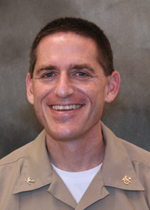A new report released today affirms that HIV rates among men who have sex with men (MSM) in the U.S. are especially high in the South, reinforcing that HIV prevention efforts in the region, as in the rest of the country, must address the needs of gay and bisexual men.

Prevalence of human immunodeficiency virus diagnoses among men who have sex with men (MSM) per 100 MSM, by US states and District of Columbia, 2012. Map courtesy of Emory University
The report in JMIR Public Health and Surveillance, authored by researchers at Emory University’s Rollins School of Public Health, provides, for the first time, state, city, and county estimates of HIV rates among MSM. HIV prevalence among MSM in 2012 was 15 percent (i.e., 15 in 100 MSM were living with an HIV infection) but rates vary dramatically by geographic area.
For example, of the 25 metropolitan statistical areas (MSAs) with the highest levels of MSM living with an HIV diagnosis, 21 are in southern states.
 Greg Milett, amfAR vice president and director of public policy“This analysis is the next step in a pivot of prevention services,” said Greg Millett, amfAR vice president and director of public policy. ”The first pivot was toward greater investments in the southern U.S. where most HIV infections are taking place. The next pivot that these data suggest is to focus prevention services primarily on gay and bisexual men across the country, especially in the South.”
Greg Milett, amfAR vice president and director of public policy“This analysis is the next step in a pivot of prevention services,” said Greg Millett, amfAR vice president and director of public policy. ”The first pivot was toward greater investments in the southern U.S. where most HIV infections are taking place. The next pivot that these data suggest is to focus prevention services primarily on gay and bisexual men across the country, especially in the South.”
Previous studies have shown that the southern U.S. has the highest rates of HIV diagnoses overall, and that people living with HIV in the South are less likely to know that they are infected and less likely to receive the care and treatment they need to protect their health and avoid transmitting the virus to others.
In 2012, there were six states where more than 15 percent of MSM were living with a diagnosed HIV infection, all of which were in the South. Estimates showed in 2012, at least one in four MSM was diagnosed with HIV in Jackson, MS; Columbia, SC; El Paso, TX; Augusta, GA; and Baton Rouge, LA.
The analyses were funded in part by a Centers for Disease Control and Prevention cooperative agreement with the Rollins School of Public Health and used CDC HIV surveillance data.
 Dr. Jonathan Mermin, director of the CDC’s National Center for HIV/AIDS, Viral Hepatitis, STD, and TB Prevention (NCHHSTP)The CDC is responding to the heavy burden of HIV in the South. Between 2010 and 2015, the agency increased its overall support to southern health departments and community-based organizations by 22 percent. Health departments are responsible for allocating the funding according to their specific local needs. Furthermore, the CDC devotes more HIV prevention resources to gay and bisexual men than to any other risk group.
Dr. Jonathan Mermin, director of the CDC’s National Center for HIV/AIDS, Viral Hepatitis, STD, and TB Prevention (NCHHSTP)The CDC is responding to the heavy burden of HIV in the South. Between 2010 and 2015, the agency increased its overall support to southern health departments and community-based organizations by 22 percent. Health departments are responsible for allocating the funding according to their specific local needs. Furthermore, the CDC devotes more HIV prevention resources to gay and bisexual men than to any other risk group.
“We have more tools than ever before to stop HIV, including testing, ongoing HIV care and treatment, condoms, behavioral risk reduction, and PrEP (pre-exposure prophylaxis),” said Dr. Jonathan Mermin, director of CDC’s National Center for HIV/AIDS, Viral Hepatitis, STD, and TB Prevention. “If we deliver these tools where they’re needed most, we can have a tremendous impact on the epidemic.”
See the complete report here.